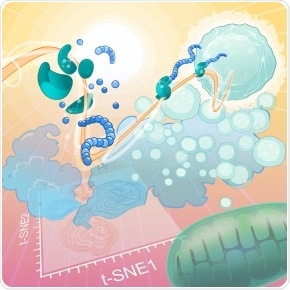Scientists have developed a novel process that may help personalize anticancer treatments.

Image Credit: Olivier Cabaud.
The team involved researchers from the CNRS, INSERM, and Aix-Marseille University at the Centre d’Immunologie de Marseille-Luminy, along with collaborators from the University of California San Francisco and the Marseille Public University Hospital System (AP-HM), with support from Canceropôle Provence–Alpes–Côte d’Azur.
The researchers’ patented method demonstrates the energy status of cells—a sign of their activity. The study was published in the Cell Metabolism journal on December 1st, 2020.
Immunotherapies are considered a potential anticancer arsenal and they function by mobilizing the immune system to detect and destroy tumor cells. But at present, only one-third of patients react to immunotherapies—this is because the tumor environment can be aggressive to immune cells, denying them their source of energy, which reduces the efficacy of treatment.
The energy status of the different types of immune cells serves as a marker of their activity, and especially of their pro-tumor or anti-tumor action. Hence, to increase the efficacy of immunotherapies, it is important to have an easy technique to define the energy profiles of immune cells from tumor specimens.
SCENITH is one such technique that was created by researchers working in Marseille and San Francisco. It detects energy sources that are relied on by different types of cells in the tumor and, most significantly, the specific requirements of immune cells in this aggressive environment. This technique utilizes the level of protein synthesis, a procedure that accounts for 50% of cellular energy consumption, as a sign of the energy status of the cell.
The biopsy sample is divided into subsamples and each is treated with an inhibitor of a metabolic pathway via which cells generate energy.
The levels of protein synthesis are subsequently quantified with the help of a flow cytometer, which also makes it viable to distinguish cell types in the sample and detect cell surface markers that are targeted by therapies.
Thus, the SCENITH technique detects the energy status of each cancer or immune cell inside the tumor, its energy sources, as well as the metabolic routes it depends on.
The researchers behind the SCENITH method have already started to work with clinical research groups to gain a deeper interpretation of how it might be applied to estimate patients’ treatment response.
The team is looking for this kind of additional collaboration to establish profiles linked with different reactions to immunotherapy and chemotherapy. The SCENITH method is aiming to allow personalized treatment for every patient, manipulating the weaknesses of the tumor and the strengths of the immune response.
Source:
Journal reference:
Argüello, R. J., et al. (2020) SCENITH: A Flow Cytometry-Based Method to Functionally Profile Energy Metabolism with Single-Cell Resolution. Cell Metabolism. doi.org/10.1016/j.cmet.2020.11.007.